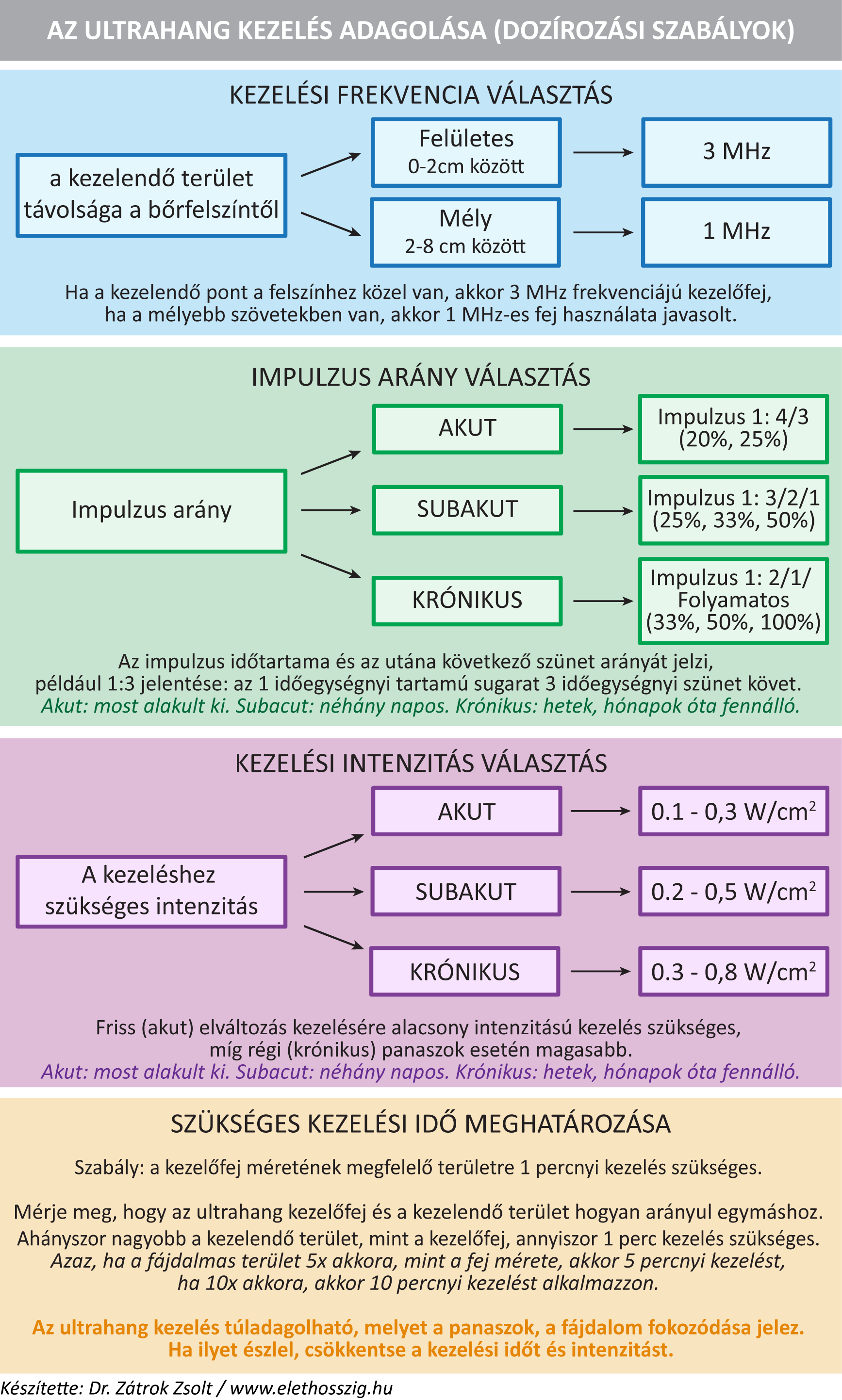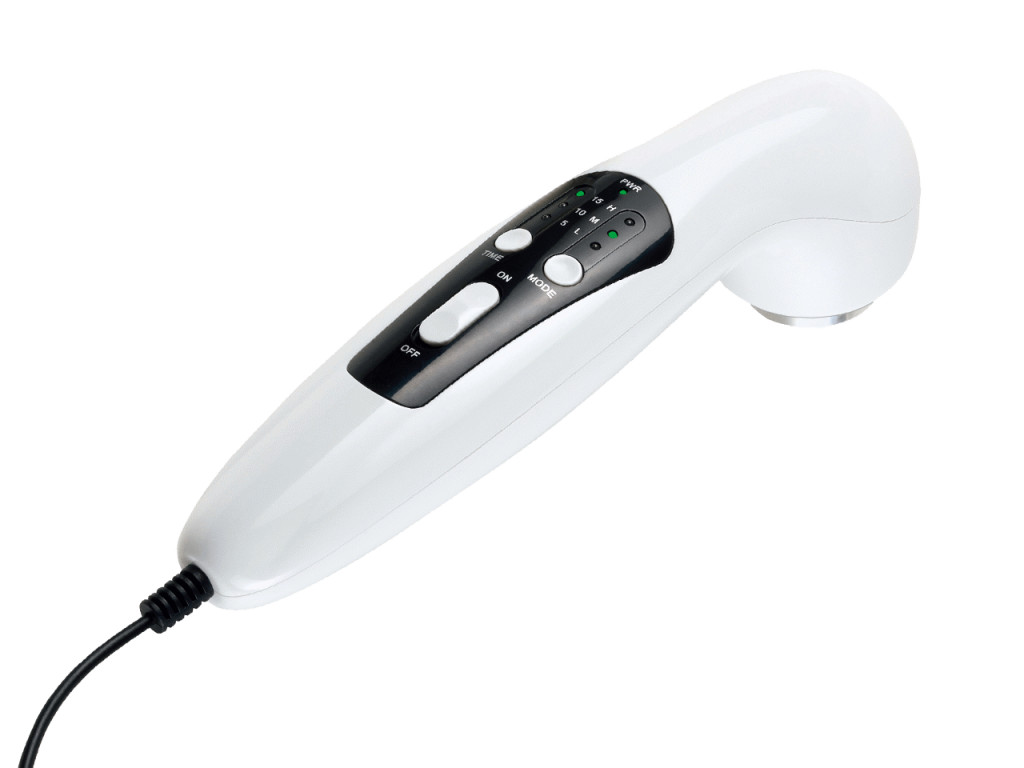Ultrasound Dosage – Treatment Administration
Ultrasound treatment is very often used in musculoskeletal diseases. However, the dosage you receive matters because ultrasound – similarly to other procedures and medications – cannot be "consumed" without limits. Dosage requires attention as it can be overdosed just like drugs. Fortunately, it does not cause poisoning, but it may intensify symptoms and pain. If you experience such effects, stop the treatment […]
Ultrasound treatment is frequently used for musculoskeletal conditions. However, the 'dosage' you receive matters, as ultrasound—like other procedures and medications—is not "consumable" without limits. Dosage (administering the dose) requires careful attention because, similar to medications, it can be overdosed. Fortunately, it does not cause poisoning, but it can intensify symptoms and increase pain. If you notice such effects, stop the treatment and check what "dose" you actually need. Reducing treatment frequency, duration, and/or intensity is the solution in such cases.
Fundamental Information About Ultrasound Dosage
Ultrasound Frequency
How deeply ultrasound waves penetrate into the body depends on their frequency. The lower the frequency, the deeper the penetration. Ultrasound treatments generally use frequencies of 1 and 3 MHz. When the target area is close to the surface, use a 3 MHz applicator, whereas for deeper tissues, a 1 MHz applicator should be used. The 3 MHz frequency is typically applied for skin and cosmetic treatments, while 1 MHz is suitable for musculoskeletal issues.
Pulse Ratio
Ultrasound waves can be continuous or pulsed. Devices that emit continuous waves should only be used for chronic issues. For example, if you have been struggling with tennis elbow or Achilles tendon inflammation for half a year, you can use the continuous mode.
In all other cases, especially acute inflammations, pain, or injuries, use the pulsed mode. However, do not expect pulsed mode from devices costing only a few tens of thousands of forints; only better devices provide this feature. Their prices start at approximately 200,000 HUF.
Pulsed ultrasound means the device emits waves for a certain time, followed by a pause. Different diseases or conditions require varying radiation-pause ratios. The appropriate ratio for a specific condition is generally found in the device’s user manual.
The pulse ratio refers to the ratio of the pulse duration to the following pause duration. For example, a 1:3 ratio means the device emits ultrasound for 1 time unit followed by a 3 time units pause (during which no ultrasound is emitted).
Choosing the correct pulse ratio depends primarily on the condition of the tissues. The fresher the injury, the more sensitively the tissues react to the energy. For fresh injuries, a longer pause after the ultrasound pulse is recommended, such as 1:3 or 1:4 ratios.
The older the injury, the more the tissues "prefer" concentrated energy input. In chronic cases, the pulse ratio can be reduced to 1:2, 1:1, or even continuous (uninterrupted) ultrasound emission can be applied.
General principle: for ACUTE complaints use 1:4 or 1:3, for subacute complaints lasting a few days use 1:2 or 1:1, and for chronic conditions use 1:1 pulsed or continuous ultrasound.
M-Sonic 950 therapeutic ultrasound device, 1Mhz
M-Sonic 950 therapeutic ultrasound (1Mhz) for inflammation and pain-reducing treatments, for home use
Treatment Intensity
Similar to determining the pulse ratio, the ultrasound intensity required by the target tissue depends on the tissue condition. The more severe the injury, the milder the ultrasound radiation needed. The longer a condition persists, the less sensitive the tissue becomes, thus you can treat with higher intensity to initiate healing.
Also consider that part of the ultrasound energy is lost, for example if you do not use sufficient gel.
You can determine the required treatment intensity from the following table:
| Tissue Condition | Required Intensity |
| Acute | 0.1 – 0.3 W/cm2 |
| Subacute | 0.2 – 0.5 W/cm2 |
| Chronic | 0.3 – 0.8 W/cm2 |
Treatment Depth
Ultrasound is absorbed by tissues. The degree of absorption varies depending on the thickness and condition of various tissues (e.g., skin, fat, muscle, etc.). It is generally accepted that 3 MHz treatment should be used for superficial lesions located within 2 cm from the skin surface. For deeper areas, a 1 MHz applicator is recommended.
Knowledge of absorption is important because the intensity set on the device does not reach deep tissue unchanged. If you want to treat a lesion located 6 cm deep, you must consider absorption. The deeper the target tissue, the higher the intensity setting on the device must be. The following table helps determine the intensity setting on the device.
Example: You want to treat an acute lesion located at 5 cm depth. The intensity requirement for acute tissue is 0.3 W/cm2. Follow the 5 cm column in the table to the 0.3 W/cm2 row. Here you see that on your device you must set an intensity of 0.68 W/cm2 to have 0.3 W/cm2 intensity at 5 cm depth.
| Lesion Depth (cm) | |||||||
| Required Intensity | 0.5 | 1 | 2 | 3 | 4 | 5 | 6 |
| 1.0 W/cm2 | 1.20 | 1.40 | 1.80 | 1.75 | 2.00 | 2.25 | 2.50 |
| 0.9 W/cm2 | 1.08 | 1.26 | 1.62 | 1.58 | 1.80 | 2.03 | 2.25 |
| 0.8 W/cm2 | 0.96 | 1.12 | 1.44 | 1.40 | 1.60 | 1.80 | 2.00 |
| 0.7 W/cm2 | 0.84 | 0.98 | 1.26 | 1.23 | 1.40 | 1.58 | 1.75 |
| 0.6 W/cm2 | 0.72 | 0.84 | 1.08 | 1.05 | 1.20 | 1.35 | 1.50 |
| 0.5 W/cm2 | 0.60 | 0.70 | 0.90 | 0.88 | 1.00 | 1.13 | 1.25 |
| 0.4 W/cm2 | 0.48 | 0.56 | 0.72 | 0.70 | 0.80 | 0.90 | 1.00 |
| 0.3 W/cm2 | 0.36 | 0.42 | 0.54 | 0.53 | 0.60 | 0.68 | 0.75 |
| 0.2 W/cm2 | 0.24 | 0.28 | 0.36 | 0.35 | 0.40 | 0.45 | 0.50 |
| 0.1 W/cm2 | 0.12 | 0.14 | 0.18 | 0.18 | 0.20 | 0.23 | 0.2 |
Treatment Time
Rule: One minute of treatment is needed for an area equivalent to the size of the applicator head.
Measure how the ultrasound applicator compares to the area being treated. The treatment time equals the number of times the treatment area is larger than the head size. For example, if the painful area is 5 times larger than the head size, treat for 5 minutes; if it’s 10 times larger, then treat for 10 minutes.
You can overdose ultrasound treatment, which will be signaled by increased symptoms and pain. If you notice this, reduce treatment time and intensity.
Treating an area at too high intensity and for too long can be harmful. Ultrasound’s main effect comes from tissue heating. If an area receives too much at once, it will hinder rather than promote healing. Imagine it like sunbathing. Regular 15–20 minute exposure gradually tans you; however, lying out for 3–4 hours causes sunburn instead of tanning. Ultrasound helps when applied in correct and regular doses.
If uncertain, consult your treating physician or a physiotherapy expert experienced in ultrasound treatment to determine appropriate settings based on your symptoms.



